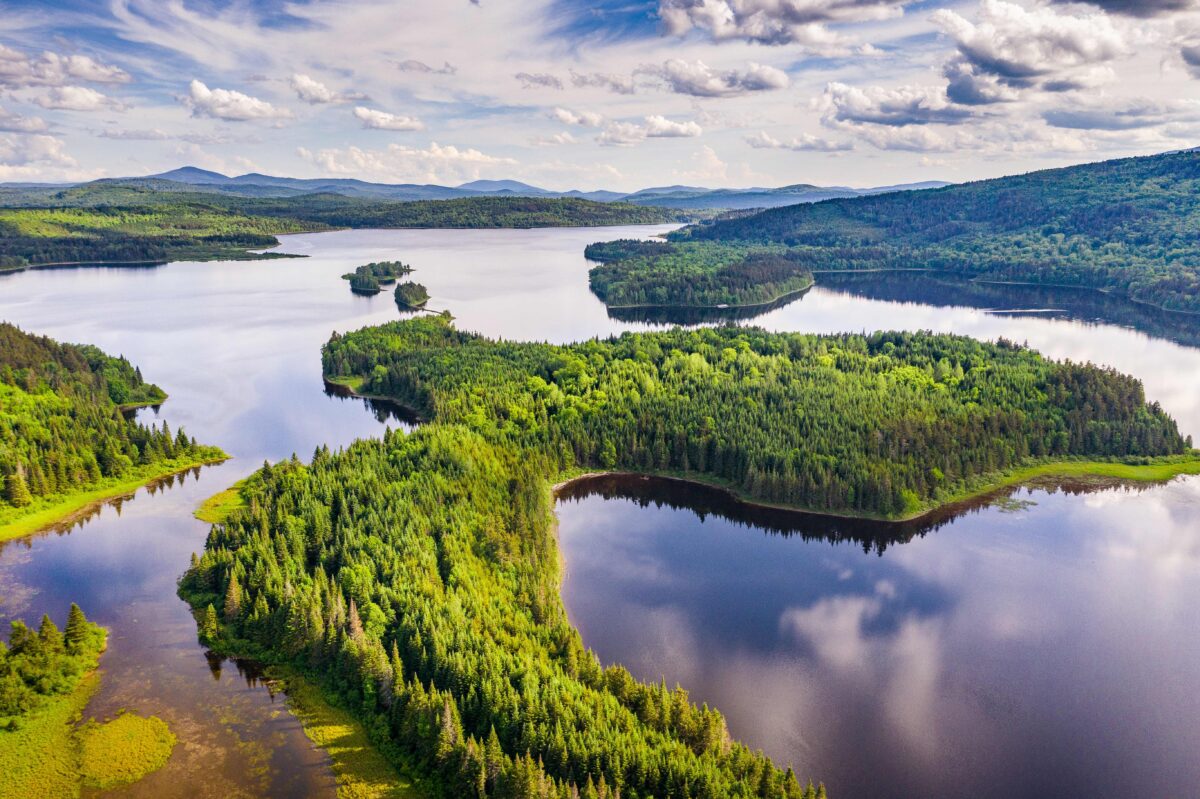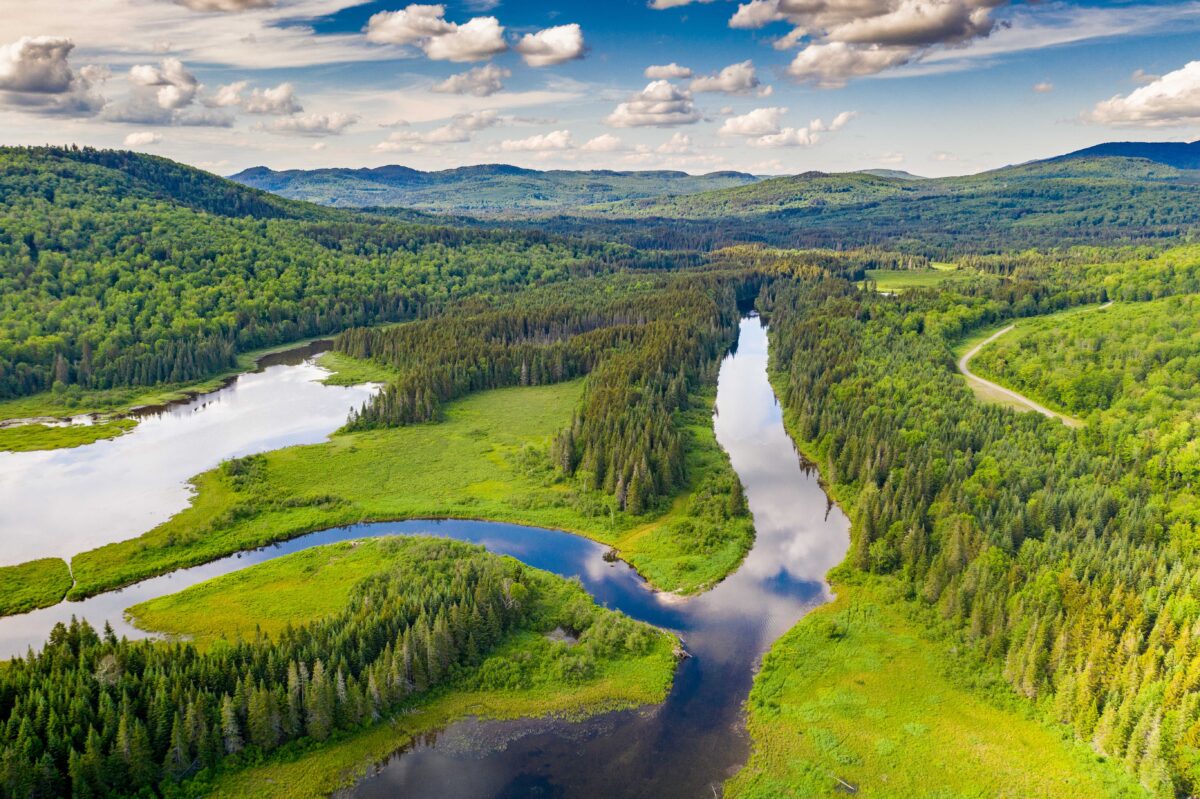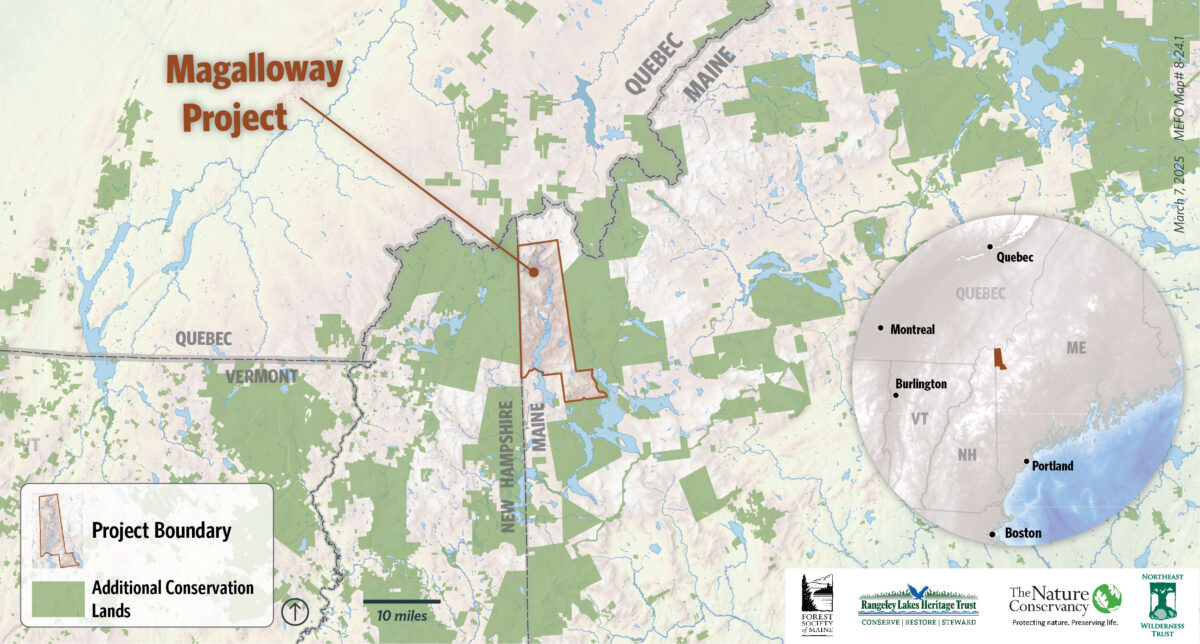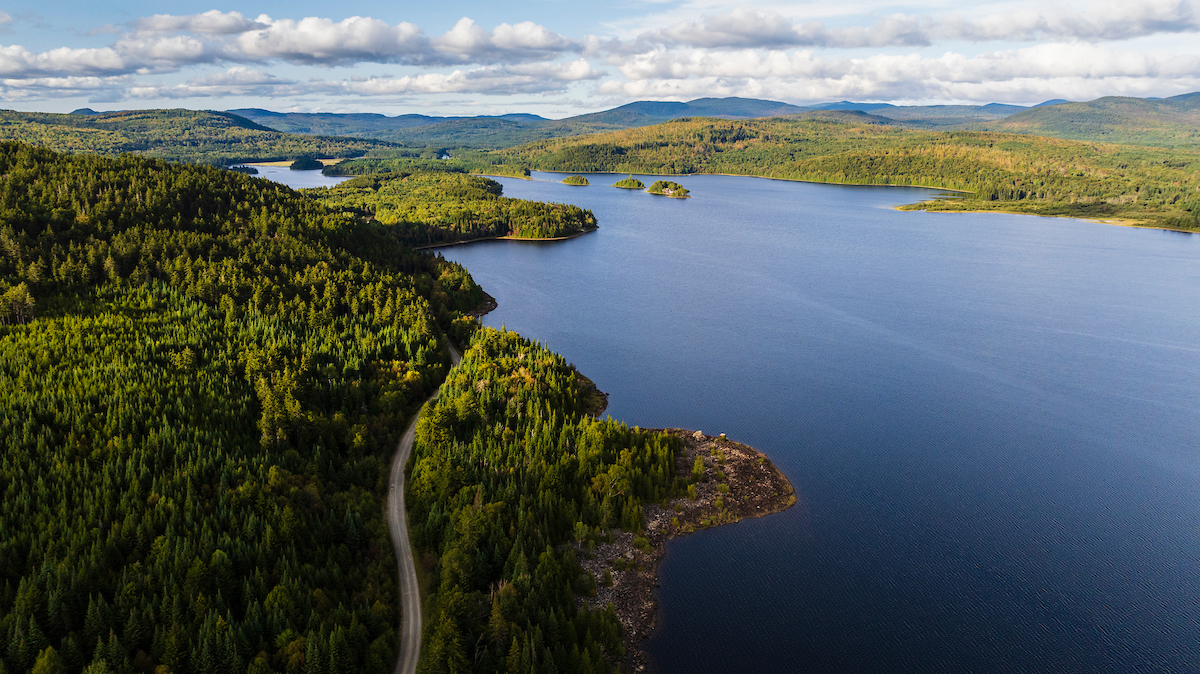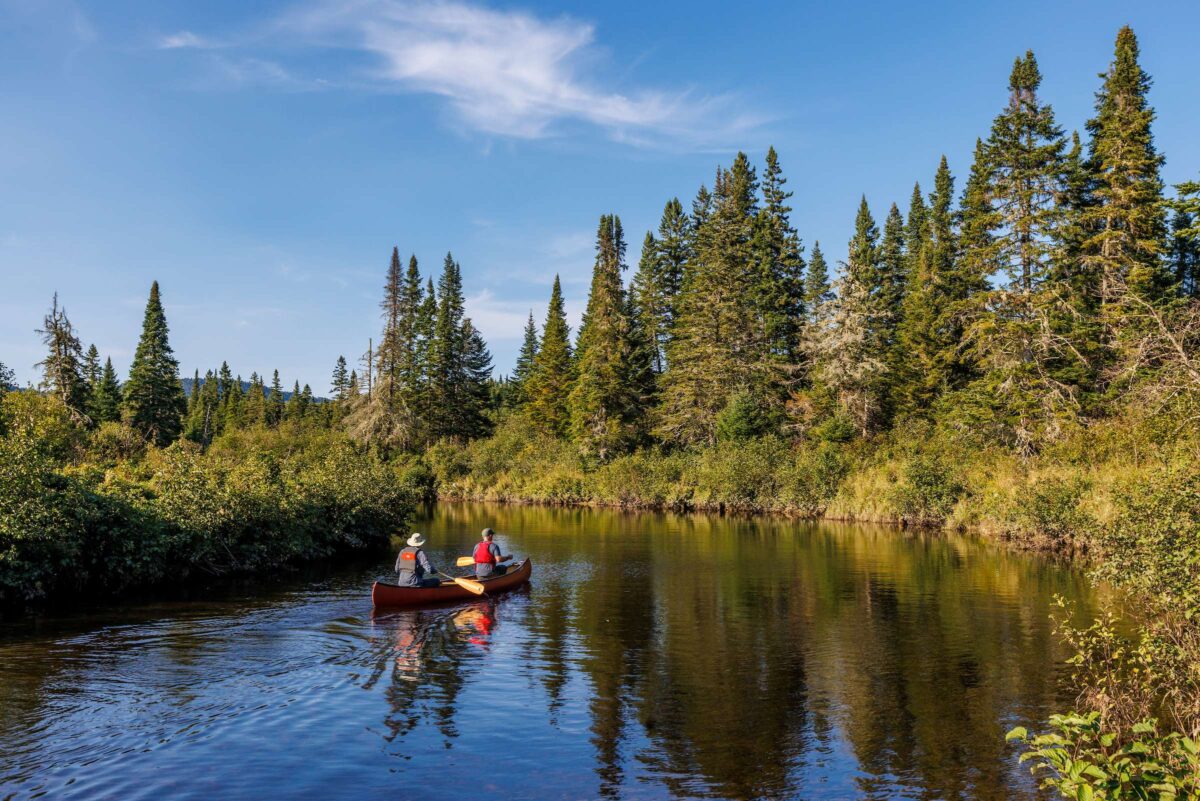As Featured in Gaining Ground, a publication of the Land Trust Alliance
By Land Trust Alliance Staff
Four conservation organizations have announced a partnership aimed at permanently conserving 78,000 acres in the Magalloway region of western Maine. The multifaceted land conservation project will maintain existing recreational access to the property’s lands and waters, while establishing forested buffers around rivers, lakes, and streams. Core to the purpose, the project will help sustain the regional economy by continuing opportunities for active forest management on 62,500 acres, and in addition, designate an 11,200-acre wilderness preserve that will enhance forest and biological diversity within its boundaries.
The Nature Conservancy in Maine (TNC); Forest Society of Maine (FSM); Rangeley Lakes Heritage Trust (RLHT); and Northeast Wilderness Trust (NEWT), have come together as the Magalloway Collaborative and are seeking to raise $62 million to fund the project by May 2026.
David Miller, Executive Director of RLHT, emphasized the project’s importance:
“We have an incredible opportunity before us with the Magalloway project to conserve 78,000 acres and effectively connect more than 500,000 acres of conserved lands to the east and west. With the support of a community who loves the Rangeley Region, we can take action and protect these globally significant lands and waters for future generations. But we must act now.”
The Magalloway project’s balanced conservation approach was negotiated in partnership with Wagner Forest Management, representing Bayroot, LLC, the property owner. Most of the property — 62,500 acres — will continue to be owned by Bayroot and support the regional forest and recreational economy.
A new permanent conservation easement held by Forest Society of Maine will restrict future development, secure substantial forested buffers around streams and lakes, allow the lands to be managed for forest products, and continue allowing public access for hunting, fishing, boating, and other recreational and cultural uses.
Northeast Wilderness Trust will acquire more than 11,000 acres of the property to establish a new wilderness preserve within the headwaters of the Magalloway River and upland forests of Ledge Ridge and Rump Mountain. This area expands upon adjacent ecological reserves in New Hampshire’s Connecticut Lakes Region.
Rangeley Lakes Heritage Trust will own and manage more than 4,000 acres for recreation and wildlife habitat, including corridors along the Little Magalloway and Magalloway rivers and a forest tract southeast Cupsuptic Lake.
Read the full article on the Land Trust Alliance blog.
Partner Details
Rangeley Lakes Heritage Trust
Since its inception in 1991, Rangeley Lakes Heritage Trust (RLHT) has conserved over 125,000 acres in western Maine. RLHT’s mission is to sustain the ecological, economic, and social vitality of the Rangeley Region by conserving, restoring, and stewarding its lands and waters for present and future generations. RLHT works on the ground to restore habitats, build climate resiliency in the region, and conserve biodiversity in one of the most ecologically significant landscapes in North America. RLHT also supports and practices sustainable forestry and connects the community to conservation through a broad network of public-access trails. Learn more at rlht.org.
Forest Society of Maine
Forest Society of Maine, a statewide land trust established in 1984, assists landowners, families, and communities to conserve forestland across the state for sustainable forest management, recreation, wildlife habitat, and historic and cultural values. Over the past 40 years, FSM has helped conserve more than one million acres, making it the seventh largest land trust in the country by conserved acres. More information about the Forest Society of Maine can be found at www.fsmaine.org.
Northeast Wilderness Trust
Northeast Wilderness Trust is a regional land trust that focuses exclusively on protecting wilderness areas—lands permanently protected as forever wild, where natural processes direct the ebb and flow of life. With its headquarters in Vermont, staff in multiple states, and board members across the Northeast, the Wilderness Trust (www.newildernesstrust.org) protects more than 93,000 acres in New York, Vermont, New Hampshire, Maine, Massachusetts, and Connecticut.
The Nature Conservancy
The Nature Conservancy is a global conservation organization dedicated to conserving the lands and waters on which all life depends. TNC is working to make a lasting difference in 81 countries and territories and uses a collaborative approach that engages local communities, governments, tribes, the private sector, and other partners. The Appalachians are one of four current global focal areas for TNC. Co-founded in 1956 by Rachel Carson, TNC Maine has helped protect almost 2.5 million acres and currently owns and manages around 300,000 acres in the state. To learn more, visit www.nature.org/maine or follow @TNCMaine on social media.
Media contacts:
Molly Shaw
Director of Communications, Rangeley Lakes Heritage Trust
mshaw@rlht.org | 207-615-6659
Richard Knox
Director of Communications, Northeast Wilderness Trust
richard@newildernesstrust.org | 207-242-5578

